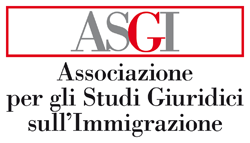Archivio saggi e commenti
La determinazione dell’età dei richiedenti asilo nei Paesi di “secondo approdo”: in dubio pro software?
di Luca Alessandria
Abstract: I movimenti secondari comportano la necessità per lo Stato membro di destinazione di accertare l’età dei richiedenti asilo che hanno già fatto ingresso nel territorio europeo in un altro Stato membro. La regolarità e l’efficacia della procedura di accertamento dell’età sono di fondamentale importanza per la tutela degli interessi dei minori richiedenti asilo e dipendono, in ultima analisi, dalla legittimità e dall’adeguatezza dei mezzi di indagine impiegati. In assenza di norme uniformi tra gli Stati membri, assume particolare rilievo il modo in cui le autorità degli Stati membri di secondo arrivo tengono conto delle risultanze dell’accertamento dell’età effettuato nel Paese di primo ingresso, quali ad esempio le informazioni sull’età derivanti dai sistemi informativi comuni. Il presente lavoro cercherà di stabilire, alla luce delle fonti internazionali ed europee in materia di protezione dei minori, nonché del quadro procedurale del sistema comune europeo di asilo, quale efficacia possa essere legittimamente riconosciuta alle determinazioni dell’età effettuate dallo Stato membro di primo ingresso.
Abstract: Secondary movements entail the need for the Member State of destination to assess the age of asylum seekers who have already entered the European territory in another Member State. The regularity and effectiveness of the age assessment procedure are of paramount importance for the protection of minor asylum seekers’ interests and ultimately depend on the lawfulness and appropriateness of the means of investigation employed. Recently, the implementation of shared databases in the Common European Asylum System has made available to the migration and security authorities of each Member State the results of investigations carried out by other States on the characteristics of the asylum seeker, including his age. In the absence of uniform rules at the European level, it is crucial to investigate how the authorities of the 'second arrival' Member States take into account the findings of the age assessment carried out in the country of first entry, such as age information from common information systems. This paper will attempt to establish, in the light of international and European sources on child protection, as well as the procedural framework of the Common European Asylum System, whether and under which conditions such information can be considered valid and binding.
Cerca nel sito
Rubrica di Questione Giustizia & Diritto, Immigrazione e Cittadinanza
Fascicoli
Per gli Autori
Link esterni
Newsletter
Sito realizzato con il contributo della Fondazione "Carlo Maria Verardi"




